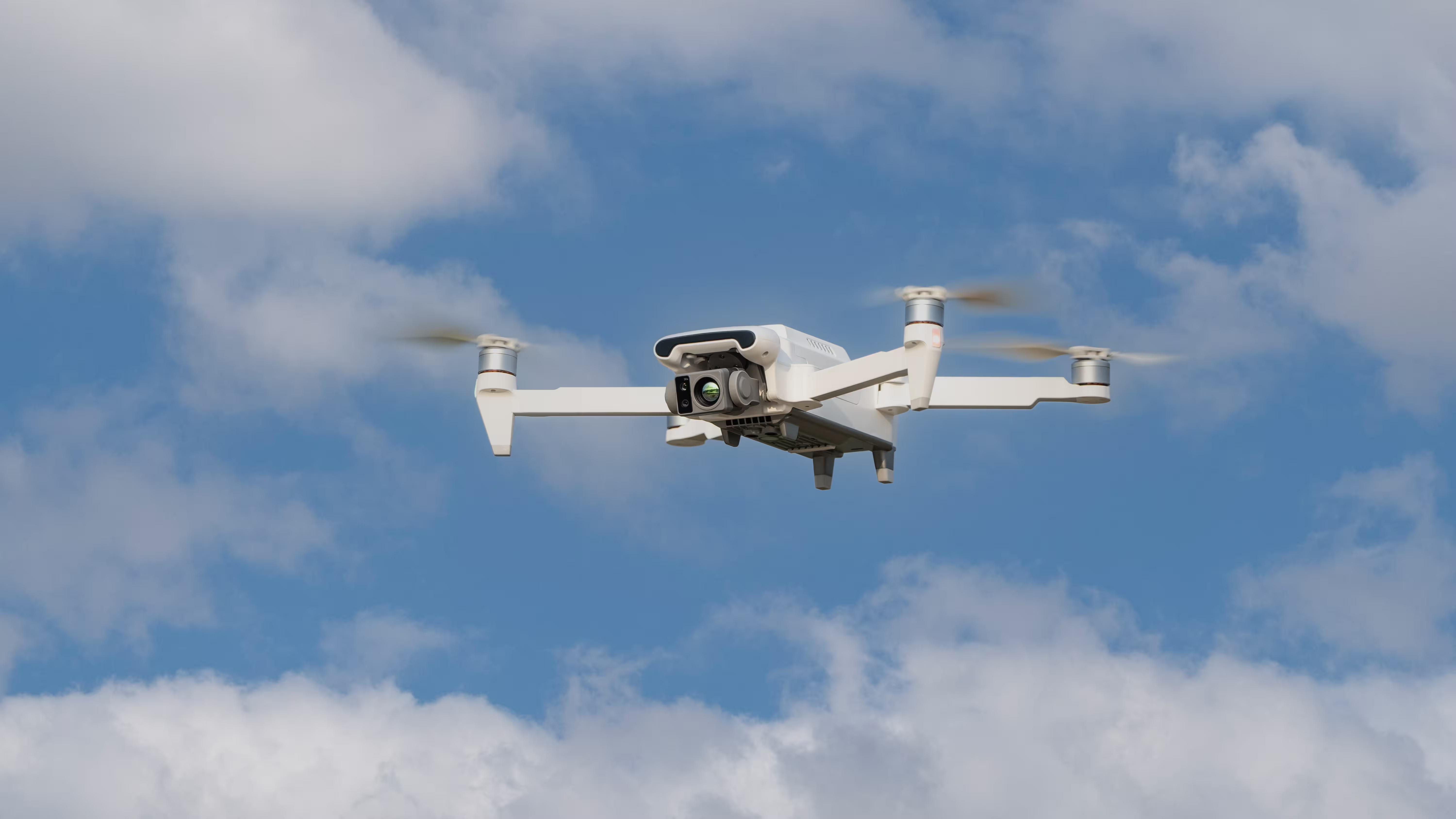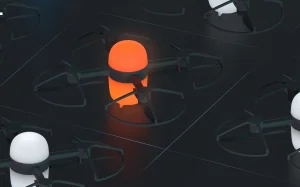In an age where unmanned aerial vehicles (UAVs) are rapidly evolving, infrared drones—also known as IR drones or drones with infrared cameras—are reshaping how we see and interpret the world from above. From search and rescue missions to industrial inspections and scientific research, these flying platforms equipped with advanced infrared sensors offer a new dimension of data: thermal radiation.
This guide will take a deep dive into how infrared camera drones work, the differences between IR and thermal imaging, their real-world applications, key components to look for, and why models like the MMC X8T are pushing boundaries in drone-based infrared vision.
What Is an Infrared Drone?
An infrared drone is a UAV equipped with sensors that detect infrared radiation (IR), which is emitted as heat by all objects above absolute zero. Unlike conventional RGB cameras that operate in the visible light spectrum (400–700 nm), IR cameras capture electromagnetic radiation in longer wavelengths—typically between 700 nm and 14,000 nm.
Infrared vs. Thermal vs. Visible Light Cameras
Though people often use “infrared” and “thermal” interchangeably, there are nuanced differences:
| Camera Type | Spectrum Range | Detects | Common Use |
|---|---|---|---|
| Visible Light Camera | 400–700 nm | Reflected Light | Photography, Mapping, Inspection |
| Near-IR Camera (NIR) | 700–1,400 nm | Reflected IR Light | Multispectral Imaging, Agriculture |
| Short/Mid-Wave IR Camera (SWIR/MWIR) | 1,400–5,000 nm | Thermal Reflection & Emission | Military, Surveillance, Research |
| Long-Wave IR Camera (LWIR) | 8,000–14,000 nm | Heat Emission | Thermal Imaging, Inspections, SAR |
Most infrared drones used in industrial or public safety scenarios utilize LWIR sensors, which allow for passive, high-contrast thermal imaging—even in total darkness or fog.
How Infrared Camera Drones Work
Infrared cameras on drones are typically equipped with uncooled microbolometers or cooled photon detectors. These sensors detect heat emitted by objects and convert that thermal radiation into electrical signals, which are then processed into real-time visual imagery or data.
Components of an IR Drone System:
- Infrared Sensor: Typically LWIR, measures temperature differences.
- Gimbal & Stabilizer: Keeps the sensor steady in motion.
- Image Processor: Converts raw sensor data into thermal images.
- Display Software: Allows the user to interpret temperature gradients, set thresholds, or overlay optical data.
- Control Interface: Integrates with UAV autopilot or manual control systems.
Applications of Infrared Drones
Infrared drones are deployed across a wide array of fields that demand precision, situational awareness, and non-invasive observation.
1. Search and Rescue (SAR)
Heat detection helps find missing persons, especially in low-light or forested environments. Infrared drones can scan wide areas quickly and identify body heat against cooler surroundings.
2. Firefighting
Firefighters use IR drones to locate hotspots in burning structures or wildfires. Identifying heat pockets can prevent rekindles and protect personnel from hidden dangers.
3. Infrastructure and Energy Inspections
Powerlines, pipelines, solar panels, and substations all emit heat signatures. IR drones detect faults, inefficiencies, or overheating components with high accuracy, reducing the need for risky manual checks.
4. Precision Agriculture
Infrared sensing reveals plant stress, water distribution, or disease before it’s visible to the naked eye. Farmers can improve irrigation, fertilizer usage, and crop health monitoring.
5. Wildlife and Conservation
Track nocturnal animals, monitor endangered species, or detect poachers in protected zones. Infrared detection enables conservation without intrusion.
MMC X8T: Redefining Infrared UAV Capabilities
When you need elite performance in infrared detection and image clarity, the MMC X8T stands tall among commercial IR drone systems. Its dual-sensor payload integrates a 640×480 high-resolution infrared sensor with a powerful optical zoom RGB camera for multispectral fusion.
- AI-powered object tracking and recognition
- Multiple thermal palettes, temperature alarms, and radiometric export support
- Interchangeable payload architecture — swap IR, RGB, LiDAR as needed
- IP-rated ruggedness for harsh field conditions
- Up to 75 minutes of flight time per battery cycle
Whether in night missions, disaster response, or industrial inspections, the X8T delivers infrared vision with industrial-grade reliability and precision.
How to Choose the Right Infrared Drone
Selecting the right IR drone depends on several variables. Here’s what to consider:
- Sensor Resolution: Minimum 320×240 for inspections; 640×512 or higher for detailed work
- Radiometric Capability: Do you need absolute temperature data or just heat contrast?
- Flight Endurance: Look for ≥45 minutes for serious operations
- Payload Modularity: Can the drone support thermal + visual + LiDAR?
- Environmental Suitability: Wind resistance, waterproofing, cold-weather operability
Entry-level IR drones may be fine for hobbyists or basic surveys. For mission-critical operations, industrial platforms like the MMC X8T provide unmatched return on investment.
Future of Infrared UAV Technology
Advancements in sensor miniaturization, radiometric accuracy, AI-driven analysis, and drone autonomy are propelling the next wave of infrared UAV innovation. Soon, expect drones that:
- Automatically interpret thermal anomalies and report findings in real time
- Perform fully autonomous patrols and inspections using pre-trained IR object recognition
- Support swarm operations for faster coverage in emergencies
Conclusion: Seeing the Unseen
Infrared drones offer a new lens—literally and figuratively—on problem-solving, decision-making, and risk reduction. Whether you’re a public safety official, energy inspector, or conservation scientist, IR drones give you superhuman insight without putting human lives at risk.
To explore the future of aerial infrared technology today, visit MMC X8T — and experience how seeing the unseen can change everything.





Comments